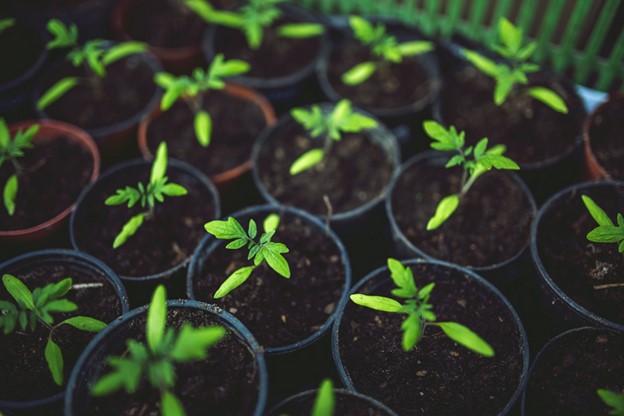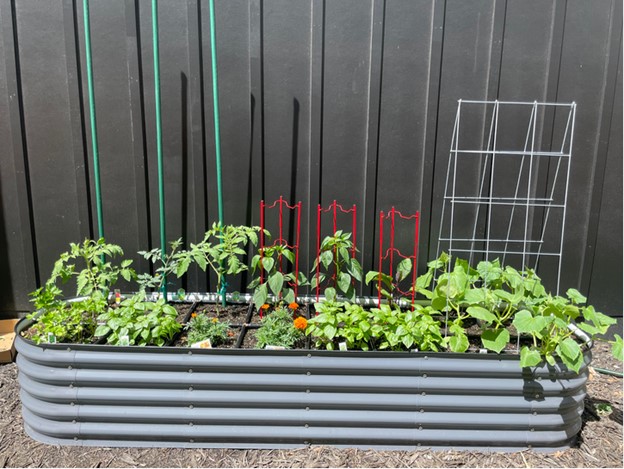Healthy, productive tomato plants depend on proper spacing, one of the most critical elements of growing successful tomatoes. Planted too close together, tomatoes fight for water, sunlight, and nutrients—resulting in disease, limited airflow, and smaller yields. Spacing them too far apart, however, wastes precious garden space and creates maintenance difficulties.
Before you plant, you need to know what type of tomato you’re growing and how you intend to grow it—whether in the ground, raised beds, or containers. Each has a slightly different spacing approach.
How Far Apart You Should Plant Tomatoes?
Table of Contents
Here’s a step-by-step guide on how far apart to space your tomatoes for maximum growth.
1. Know Your Tomato Type
Tomatoes are of two principal types, and your spacing will greatly vary with what you’re growing:
Determinate (Bush) Tomatoes

- Small, bushy plants with a limited growth habit that finishes at a given size
- Produce most of their fruit at the same time
- Handier to care for in smaller areas
Indeterminate (Vine) Tomatoes

- Keep growing and setting fruit all season long
- Require sturdy support (stakes, cages, or trellises)
- Usually larger and more sprawling
2. Spacing Guidelines by Type
The following table provides ideal spacing depending on the type of tomato and method of growing:
| Tomato Type | In Ground (No Trellis) | In Ground (Staked/Caged) | Raised Beds | Containers |
| Determinate | 18–24 inches apart | 12–18 inches apart | 18–24 inches | 5-gal pot minimum
|
| Indeterminate | 24–36 inches apart | 18–24 inches apart | 18–24 inches | 10–15 gal pot minimum |
Between Rows: Have 3–4 feet between rows to accommodate walking space and air circulation.
3. Spacing for Different Growing Methods
Now that you know your tomato variety, here’s how spacing works depending on how you’re growing them:
In the Ground (Traditional Rows)

Directly planting in the garden provides lots of room, but air circulation and row pattern become crucial.
- Determinate:
Space 18–24 inches apart in rows 3 feet apart
- Indeterminate:
If staked or caged: 18–24 inches apart
If left to sprawl: 30–36 inches apart in rows 4 feet apart
In Raised Beds

Raised beds provide more control over drainage and soil, so tomatoes may be planted closer together—particularly with support systems.
- Indeterminate: 18–24 inches
- Determinate: 12–18 inches
Support vines upright and neatly with vertical supports
In Containers

Ideal for patios or compact areas, but tomatoes will need space to expand root systems—one tomato per pot is best.
- Determinate: 5–7 gallon pot
- Indeterminate: 10–15 gallon pot
Space containers 2–3 feet apart to provide airflow
4. Vertical Support and Spacing

Vertical supports such as stakes, cages, or trellises enable you to produce more tomatoes in less space. It also enhances airflow and prevents fruit from being on the ground.
- Prune suckers and side shoots frequently to prevent overcrowding
- Indeterminate varieties particularly benefit from vertical support
- Leave 3–4 feet between rows for easy access
5. Tips for Tomato Spacing Success
Here are some final tips to ensure your tomato plants thrive:
- Avoid overcrowding to reduce fungal disease risk
- Mulch around plants to retain moisture and block weeds
- Water deeply and consistently to support strong roots
- Rotate crops annually to maintain healthy soil
Example Planting Plan for a 4′ x 8′ Raised Bed
Here’s how to maximize space depending on your tomato type:
Indeterminate Tomatoes
- 3 plants per 4 ft row
- Rows 2 ft apart (3 rows)
- Total: 9 plants on vertical stakes or cages
Determinate Tomatoes
- 4 plants per 4 ft row
- Rows 18 inches apart (3 rows)
- Total: 12 compact plants
Wrapping
Proper spacing is essential to growing healthy, high-yielding tomato plants. Whether you’re planting determinate or indeterminate varieties, in-ground, raised beds, or containers, thoughtful spacing ensures your tomatoes get the sunlight, airflow, and nutrients they need to thrive.
By following the spacing guidelines and tailoring your planting method to your garden setup, you’ll reduce the risk of disease, make maintenance easier, and enjoy a more abundant harvest.
Leave a Reply